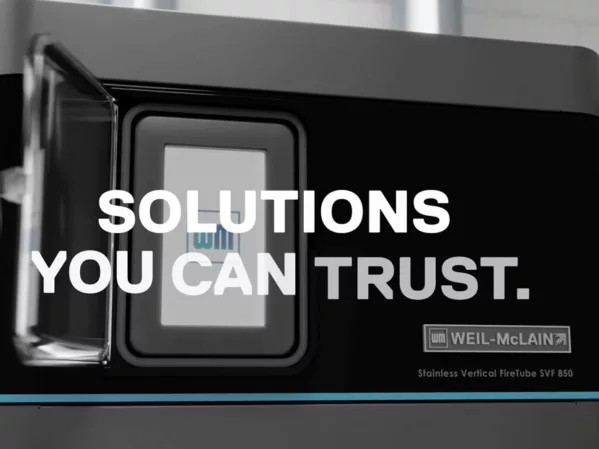Supply chain issues in recent years have forced many companies to reconsider their entire business approach. Greater priority has been placed on maintaining a steady inflow of required resources.
A recent shortage of carbon dioxide supplies has put additional strain on businesses nationwide, particularly those in the brewing industry. This shortage can be attributed to a combination of several factors, including the continuation of general supply chain issues, high demand for carbon dioxide over the summer months, and elevated hydrocarbon levels observed in September 2022 in the carbon dioxide from the Jackson Dome, one of the nation’s largest sources for the gas.
One strategy to remove some uncertainty in a supply chain is to reduce the number of third-party vendors involved in the business. For example, it may be worthwhile for companies purchasing goods from a vendor to produce those goods on-premises, if possible.
This article aims to provide a potential solution for breweries facing delayed deliveries and price increases associated with carbon dioxide: using on-premises nitrogen generation to serve as a partial or full replacement for purchasing liquid carbon dioxide for some processes.
CO2 and N use
Carbon dioxide and nitrogen have various usages in breweries. They are used as process gases (primarily for the movement of fluids while maintaining an inert environment) and for giving beverages distinct taste and visual characteristics.
Carbonation gives beer its fizzy appearance and prevents spoilage. Most beer produced in breweries is carbonated by directing a flow of carbon dioxide through the beverage. This lowers the required process time for carbonation from weeks (via natural carbonation) to days. Beer produced commercially in America is typically highly carbonated and light.
During fermentation of the brewing process, carbon dioxide is released as a byproduct when yeast digests sugars. Technology exists to capture and reuse a portion of the released carbon dioxide during brewing, which reduces the volume of gas needed to be purchased.
However, cost and production limitations have prevented many smaller breweries from purchasing these technologies since they are generally more practical in large-scale applications.
Replace CO2 with N
Carbon dioxide and nitrogen serve similar purposes in brewery processes. Replacing carbon dioxide with nitrogen is a viable solution for blanketing, purging, moving liquids, etc., where a specific gas may not necessarily be required. Both carbon dioxide and nitrogen are considered inert gases, as they do not readily react with other substances. Nitrogen, for example, can be used as a process gas without altering the carbonation characteristics of the beverage and is usually added to kegs for pressurization.
Because of the nationwide carbon dioxide shortage, brewers began investigating the practicality of switching some of their carbon dioxide processes to use nitrogen, explains Billy Chestnutt, industrial sales manager at South-Tek Systems. The manufacturer’s BeerBlast Nitrogen Generators use nitrogen to push beer to the tap.
“The applications for nitrogen that we see in the brewing process include purging/blanketing of tanks, pushing product from tank to tank, pre-purge on canning lines, running the keg washer, nitrogenating beer and testing in the quality assurance lab,” he notes.
In addition, many breweries recently began producing “nitrogenized beers,” which only involve nitrogen during brewing rather than a blend of carbon dioxide and nitrogen.
For comparison, brewing ales and lagers typically involve a 70% carbon dioxide and 30% nitrogen blend, whereas stouts and porters tend to use a 25% carbon dioxide and 75% nitrogen blend. Nitrogenized beers tend to have a smooth taste and a lasting foam head. Beer is usually nitrogenized by forcing nitrogen into the beverage at high pressures since nitrogen does not naturally combine with it like carbon dioxide.
Generating Nitrogen
The three main processes by which nitrogen is separated from oxygen and other substances in the air are the following:
- Cryogenic distillation;
- Membrane systems;
- Pressure swing adsorption (PSA).
Each of these processes has a range of product nitrogen flow rates and purities in which they are better suited to operate than the others.
Cryogenic distillation was the first of these processes to be developed, dating back to 1895. It is the process by which liquid nitrogen is obtained.
It involves cooling an input flow of air below the boiling points of its constituents. The difference in boiling points of these constituents allows for their separation. The required temperature to liquefy the components of air during this process is extreme; at atmospheric pressure, the boiling points of nitrogen and oxygen are approximately -320 F and -297 F, respectively.
Cryogenic distillation provides the greatest purity of nitrogen of the three nitrogen generation processes (more than 99.9995%). However, it is more energy-intensive and costly than membrane or PSA systems, making it economically viable only for large-scale systems.
Membrane and PSA technologies, not widely used for nitrogen separation until the 1980s, are recommended for on-premises nitrogen generation for brewery applications. Let’s take a closer at both:
• Membrane separation. Membrane systems operate via selective permeation, where differences in gas molecule diffusion rates through a packed container of hollow fibers drive separation. The hollow fibers selectively permeate oxygen, water vapor and other impurities from an input flow of compressed air, leaving nitrogen as a product.
Membrane systems can typically provide nitrogen at a purity of 99.5% and are recommended for applications where a flow rate of less than 1,000 standard cubic feet/hour (SCFH) is required, though greater flow rates can be achieved depending on membrane sizes.
Figure 1 shows an example of a membrane filtration device designed for nitrogen separation from a compressed air input.

• Pressure swing adsorption. The typical PSA process involves two pressure vessels (referred to as sieve beds) filled with carbon molecular sieve (CMS). This material selectively adsorbs gas molecules at pores on its surface. These pore sizes are on the scale of Angstroms, a unit of measurement equal to 0.1 nanometers.
When pressurized, gas molecules begin to fill the pores. Oxygen and nitrogen have molecular sizes of 2.99 and 3.05 Angstroms, respectively. Since oxygen molecules are smaller than those of nitrogen, more oxygen molecules are adsorbed at the pores of the CMS.
During the PSA process, only one of the sieve beds actively separates nitrogen from an input of compressed air. While one sieve bed is active, the other is exhausting gases stored in the CMS from the previous cycle. The rate of adsorption in the CMS of the active sieve bed will decrease with time, as the CMS can only hold a finite amount of gas molecules.
Eventually, the output nitrogen purity from the active sieve bed will start to drop (a point referred to as breakthrough). The input flow of air is then switched to the other sieve bed, and the cycle repeats itself.
Some examples of PSA nitrogen generation systems are shown in Figure 2.

PSA systems can supply a wide range of nitrogen purities and flow rates; nitrogen purities can range from 95% to 99.999%, and typical flow rates can vary anywhere from 50 to 35,000 SCFH. Factors affecting nitrogen purity and flow rate include input air flow rate, the mass of CMS used, cycle timing, adsorption pressure, etc.
Figure 3 is a basic schematic of how a nitrogen generation system is generally arranged. Two tanks (one for input air and one for product nitrogen) are recommended for most applications to stabilize system pressures when the PSA cycle switches the input air flow between sieve beds.

Benefits of on-premises generation
PSA systems designed for separating carbon dioxide from other gases exist, though these systems are best applied when a large input flow of flue gas is available, making them unfit for a brewery setting. The average cost of liquid carbon dioxide (due to the impact of recent supply and demand) is about $3.50/kg, or approximately $18/CCF (representative of the gas phase at standard conditions).
Costs associated with nitrogen in liquid bulk tanks, liquid dewars and high-pressure cylinders are approximately
$1/CCF, $5.50/CCF and $25/CCF, respectively. However, nitrogen generated on-premises can cost as little as
$0.10/CCF, representing the electrical power required to operate the system.
The initial cost of a nitrogen generation system may be greater than high-pressure cylinders and liquid nitrogen containers. Still, most companies will reach a return on investment within 12 to 18 months with proper system sizing based on process demands.
Breweries typically experience savings associated with gases of 50% to 75% by switching to on-premises nitrogen generation. If a regular maintenance schedule is followed, PSA nitrogen generation systems can have a life expectancy of 15 to 20 years.
Approximately 79% of ambient air is nitrogen, so the system will never have a shortage of gas to process. An on-premises nitrogen generation system provides a reliable supply of process gas, one that does not continually depend on third-party vendors.
Garrett Rinker is a senior project engineer at South-Tek Systems. He holds a Ph.D. in mechanical engineering. Email him at [email protected].





